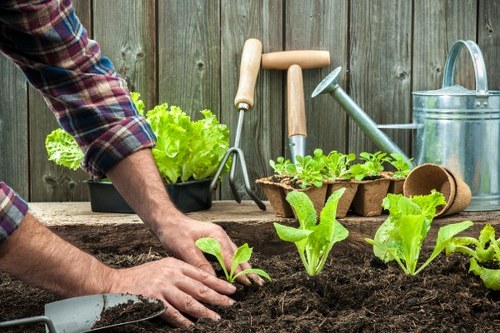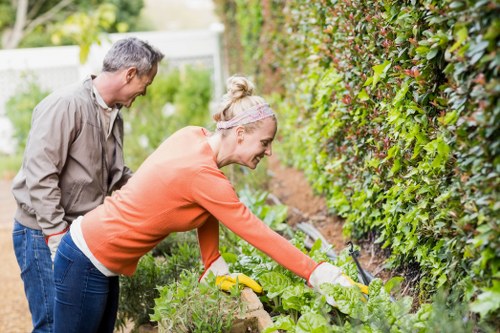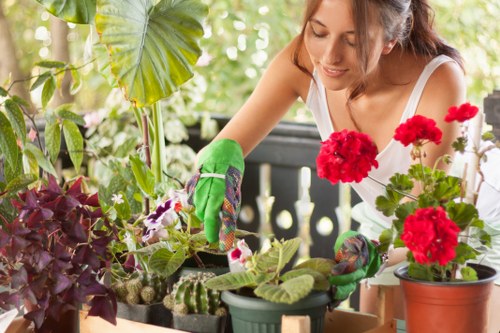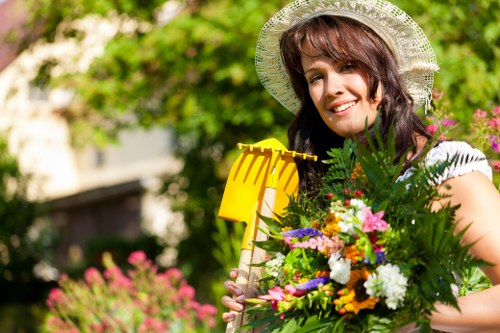Landscaping in Catford: Transforming Outdoor Spaces into Beautiful Retreats

Catford, a vibrant and diverse area in South East London, offers a unique blend of urban living and green spaces. With its growing population and increasing demand for attractive outdoor environments, **landscaping in Catford** has become a vital service for homeowners and businesses alike. Whether you're looking to enhance your home's curb appeal, create a relaxing garden sanctuary, or design a functional outdoor space for entertaining, professional landscaping can help bring your vision to life.
Understanding the local climate and soil conditions is crucial for successful landscaping. Catford experiences a temperate maritime climate, with mild winters and cool summers, making it suitable for a wide variety of plants and garden styles. Additionally, the soil composition in the area can vary, so conducting a soil test is recommended to determine the best plants and amendments needed for optimal growth.
When planning your landscaping project in Catford, consider the following key elements to ensure a harmonious and aesthetically pleasing outdoor space:

1. Designing Your Outdoor Space
A well-designed garden starts with a clear plan. Begin by assessing the size and shape of your outdoor area, taking note of existing features such as trees, structures, and pathways. Consider how you want to use the space—whether for relaxation, entertainment, gardening, or a combination of these purposes.
Incorporate elements that reflect your personal style and complement the architectural design of your home. Popular landscaping styles in Catford include:
- Modern Minimalist: Clean lines, simple plant selections, and uncluttered spaces.
- Traditional English Garden: Lush greenery, vibrant flowers, and classic garden structures.
- Contemporary Urban: Innovative materials, vertical gardens, and multifunctional areas.
Additionally, think about the flow and functionality of your garden. Pathways, seating areas, and focal points can guide visitors through the space and create areas for different activities.

2. Selecting the Right Plants
Native Plants and Sustainability
Choosing plants that are native to the Catford area can promote sustainability and reduce maintenance needs. Native plants are well-adapted to the local climate and soil conditions, making them more resilient to pests and diseases. Some popular native plants for Catford gardens include:
- Lavender: A fragrant herb that attracts pollinators and adds a splash of color.
- Hawthorn: A sturdy shrub that provides structure and wildlife habitat.
- Foxglove: Tall, striking flowers that add height and visual interest.
By incorporating native species into your landscape, you support local biodiversity and create a more environmentally friendly garden.
Perennial vs. Annual Plants
When selecting plants, consider whether they are perennials or annuals. **Perennials** return year after year, providing long-term beauty and reducing the need for frequent replanting. **Annuals**, on the other hand, bloom for a single season and may require replacement each year to maintain color and vibrancy.
Combining both types can create a dynamic and ever-changing garden, balancing the consistency of perennials with the seasonal bursts of annuals.

3. Hardscaping Elements
Hardscaping refers to the non-plant elements of your landscape, such as:
- Patios and Decks: Ideal for outdoor dining and relaxation.
- Pathways: Guide visitors through your garden and connect different areas.
- Fencing and Walls: Provide privacy and define boundaries.
- Water Features: Add a soothing element and attract wildlife.
Incorporating these elements can enhance the functionality and aesthetic appeal of your outdoor space. Materials commonly used in Catford landscaping include natural stone, brick, and timber, each offering a distinct look and feel.
When integrating hardscaping with your garden, ensure a cohesive design by selecting materials and colors that complement your overall landscape theme.

4. Sustainable Landscaping Practices
Water Conservation
Incorporating water-efficient practices can reduce your environmental impact and lower maintenance costs. Consider installing drip irrigation systems, which deliver water directly to the plant roots, minimizing evaporation and waste.
Rainwater harvesting is another effective method. Collecting and storing rainwater can provide an additional water source for your garden, especially during dry periods.
Composting and Soil Health
Maintaining healthy soil is the foundation of a thriving garden. Composting kitchen scraps and garden waste enriches the soil with essential nutrients, promoting robust plant growth. Additionally, incorporating organic matter improves soil structure, water retention, and aeration.
Mulching around plants helps retain moisture, suppress weeds, and regulate soil temperature, further contributing to soil health and plant vitality.
5. Garden Maintenance and Care
Regular maintenance is key to preserving the beauty and functionality of your landscape. Key maintenance tasks include:
- Mowing and Trimming: Keep grass and hedges at optimal heights for a neat appearance.
- Pruning and Deadheading: Remove dead or overgrown plant parts to encourage healthy growth and prolong blooming periods.
- Weeding: Prevent weeds from competing with your desired plants for nutrients and water.
- Fertilizing: Provide necessary nutrients to support plant health and growth.
By staying on top of these tasks, you ensure your garden remains a beautiful and inviting space throughout the year.
Ready to transform your outdoor space?** Contact us today to schedule a consultation with our expert landscaping team in Catford.